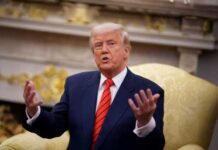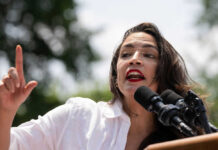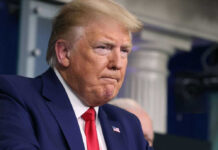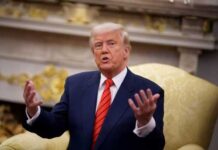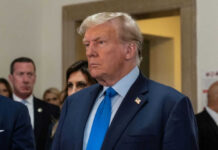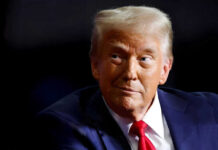
(LibertyInsiderNews.com) – Trump’s second state visit to the U.K. made history not just for its royal grandeur, but for the storm of controversy swirling outside Windsor’s ancient walls.
Story Snapshot
- Trump became the first U.S. president to receive a second U.K. state visit, amplifying his singular rapport with the monarchy.
- Protests erupted over Trump’s connections to Jeffrey Epstein, leading to dramatic public displays and media scrutiny.
- King Charles III’s welcome reflected a diplomatic priority: maintaining U.S.-U.K. relations despite public dissent.
- The event fused pageantry with political tension, underscoring the enduring complexities of modern statecraft.
Trump’s Unprecedented Royal Invitation
September 16, 2025, marked a moment that will be dissected in diplomatic textbooks for decades: President Trump, newly re-elected, arrived at Stansted Airport to a formal welcome orchestrated by the U.S. Ambassador and King Charles III’s envoy. No American president has ever been invited for a second state visit, reflecting Trump’s unique standing within the royal circle and signaling a deepening of personal diplomacy between the two nations. The move wasn’t just ceremonial, it showcased the monarchy’s willingness to prioritize strategic ties over recent public controversy.
The following day, the Trumps proceeded to Windsor Castle, greeted by King Charles III and Queen Camilla. Tradition prevailed: ceremonial salutes, an exhibition from the Royal Collection, and the grandeur of a state banquet. Yet, just outside the castle’s storied gates, protest groups projected images linking Trump to Epstein, turning Windsor’s ancient stone into a canvas for twenty-first-century outrage. This juxtaposition of royal protocol and raw public dissent revealed the friction at the heart of contemporary diplomacy.
Protests Cast a Shadow on Ceremony
Trump’s visit was choreographed to highlight friendship and alliance, but the choreography faltered amid public uproar. Protestors, emboldened by digital activism and the lingering specter of Epstein, seized the moment. Images of Trump and Epstein were beamed onto Windsor Castle, making international headlines and forcing uncomfortable questions into the otherwise scripted narrative. The British public’s response demonstrated that state visits, once insulated from controversy by tradition, now play out under the glare of social media and relentless scrutiny.
Prime Minister Keir Starmer’s meeting with Trump at Chequers focused on policy, trade, security, and post-Brexit cooperation. Meanwhile, Melania Trump’s guided tour with Queen Camilla proceeded as planned, untouched by the disquiet outside. The contrast was stark: inside, diplomacy and decorum; outside, protest and spectacle. The dual realities of the visit highlighted the shifting power dynamic between government, monarchy, and public sentiment.
Diplomacy vs. Public Sentiment: What Endures?
Diplomatic experts agree: Trump’s second state visit is a watershed, not just for its historic precedence but for the realpolitik underlying its execution. The monarchy’s decision to host Trump again, despite controversy, signals a prioritization of U.S.-U.K. ties over personal reputations. For the British government, the visit was an opportunity to reaffirm alliances and initiate new dialogues, especially in the face of economic uncertainty and global unrest.
The protests, however, are a reminder that the public’s voice, once muted by royal pageantry, now resonates globally. The use of Windsor Castle as a protest canvas encapsulates the evolution of dissent: symbolic, high-tech, and impossible to ignore. As Trump bid farewell, the echoes of controversy lingered, leaving diplomats and historians alike to ponder how future state visits will be shaped by the collision of tradition and transparency.
Copyright 2025, libertyinsidernews.com




